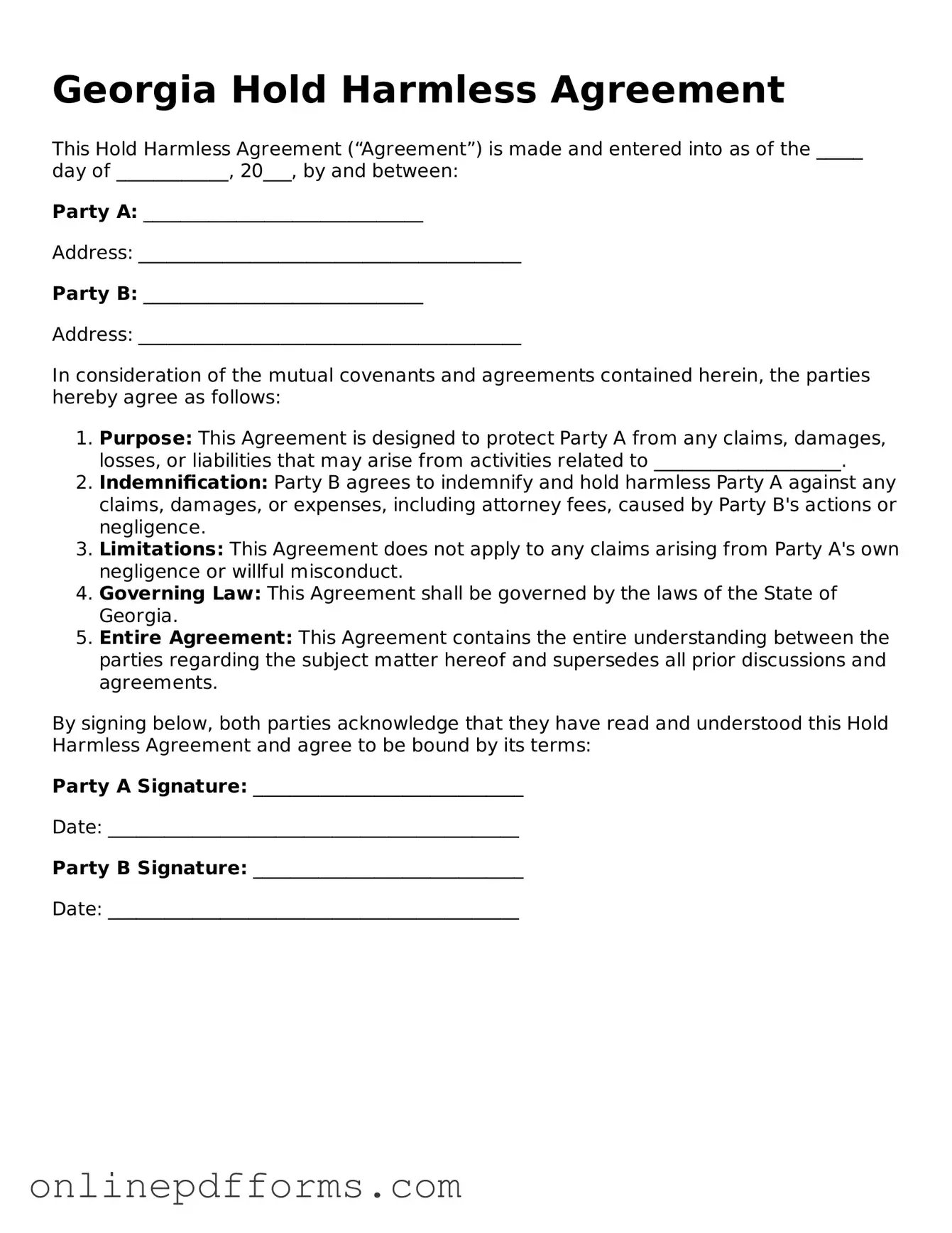The Indemnity Agreement is quite similar to the Georgia Hold Harmless Agreement. Both documents serve to protect one party from legal liability due to the actions or negligence of another. In an Indemnity Agreement, one party agrees to compensate the other for any losses or damages incurred. This is akin to the Hold Harmless Agreement, where one party agrees not to hold the other responsible for certain claims or damages. Both documents emphasize the importance of risk management in various agreements.
The Waiver of Liability is another document that shares similarities with the Hold Harmless Agreement. This waiver is often used in situations like recreational activities or events. Participants sign it to acknowledge the risks involved and agree not to hold the organizers liable for injuries. Like the Hold Harmless Agreement, the Waiver of Liability aims to protect one party from claims that could arise from the actions of another, reinforcing the principle of personal responsibility.
The Release of Liability is closely related to the Hold Harmless Agreement as well. This document releases one party from any legal claims that may arise from certain activities. When someone signs a Release of Liability, they agree not to pursue legal action against the other party for any injuries or damages incurred. This is similar to the Hold Harmless Agreement, which also seeks to limit legal claims and protect against liability.
The Service Agreement can also be compared to the Hold Harmless Agreement. While it primarily outlines the terms and conditions of a service provided, it often includes clauses that protect the service provider from liability. These clauses can mirror the protective intent of the Hold Harmless Agreement, ensuring that the service provider is not held accountable for issues that arise during the service period.
The Rental Agreement often contains a Hold Harmless clause. This clause protects landlords from liability for injuries that occur on their property. Tenants typically agree to hold the landlord harmless for certain incidents. Thus, the Rental Agreement and the Hold Harmless Agreement both serve to limit liability and clarify responsibilities between parties in a contractual relationship.
The Construction Contract frequently includes elements similar to the Hold Harmless Agreement. In construction, contractors often agree to indemnify property owners against claims arising from their work. This is designed to protect the property owner from potential lawsuits or damages. The shared goal is to define liability and responsibilities, making both documents essential in managing risk in construction projects.
Lastly, the Non-Disclosure Agreement (NDA) can have elements that resemble the Hold Harmless Agreement. While NDAs primarily focus on confidentiality, they can include clauses that protect parties from legal repercussions related to the disclosure of sensitive information. Both documents aim to create a safe environment for sharing information or engaging in activities while minimizing legal risks.
